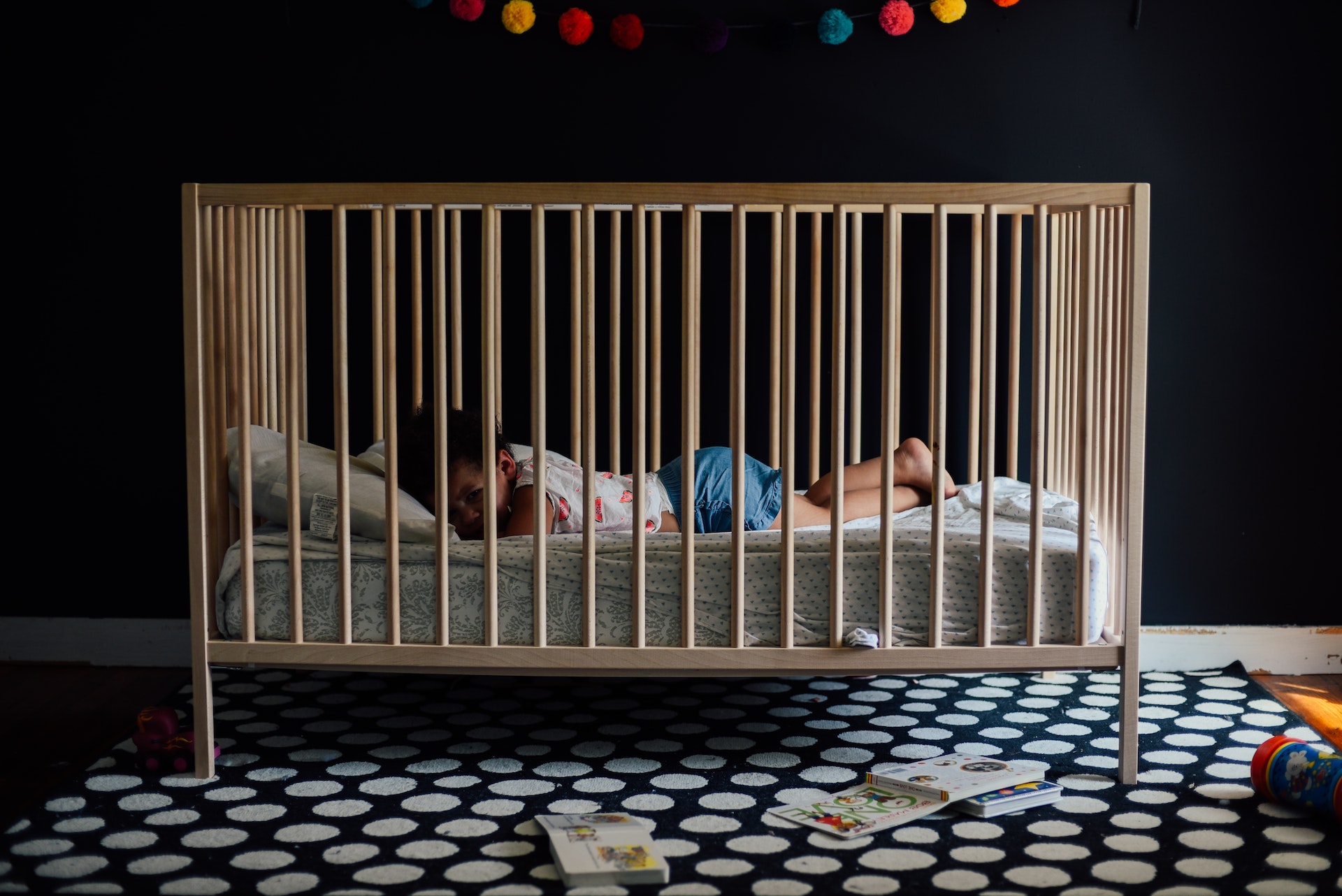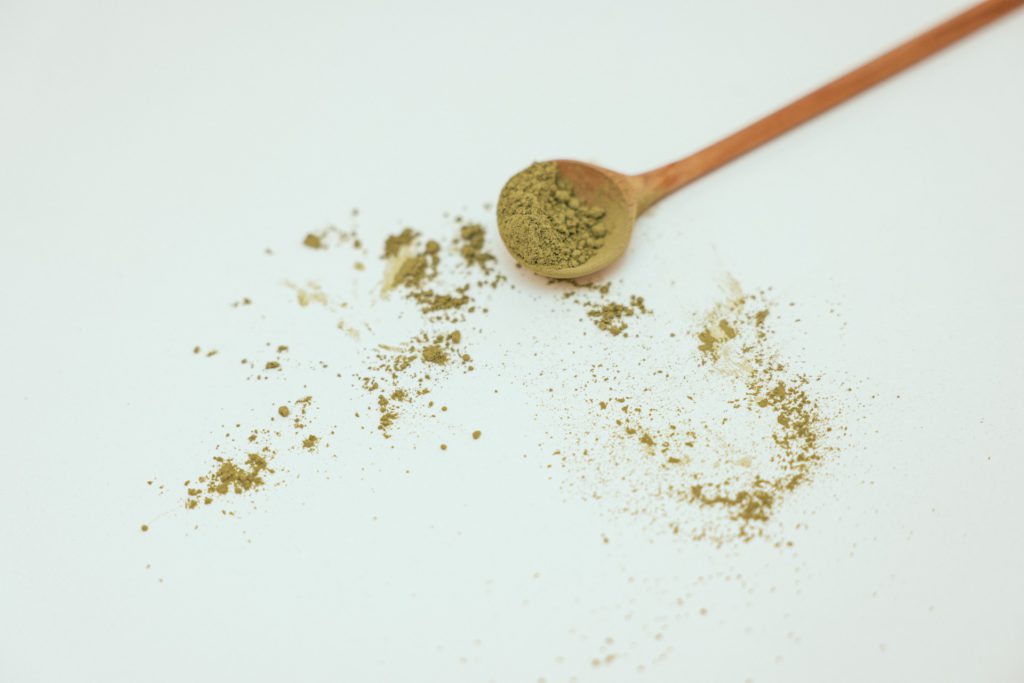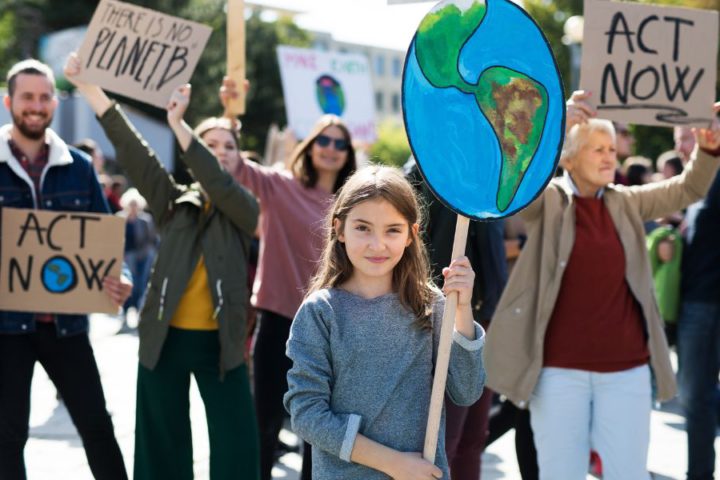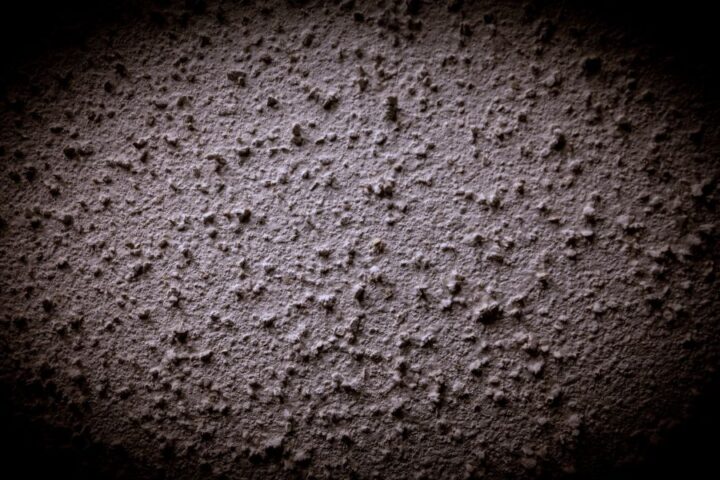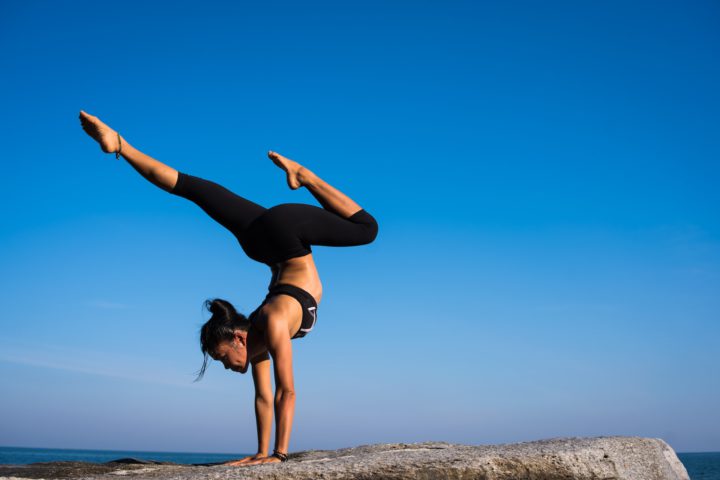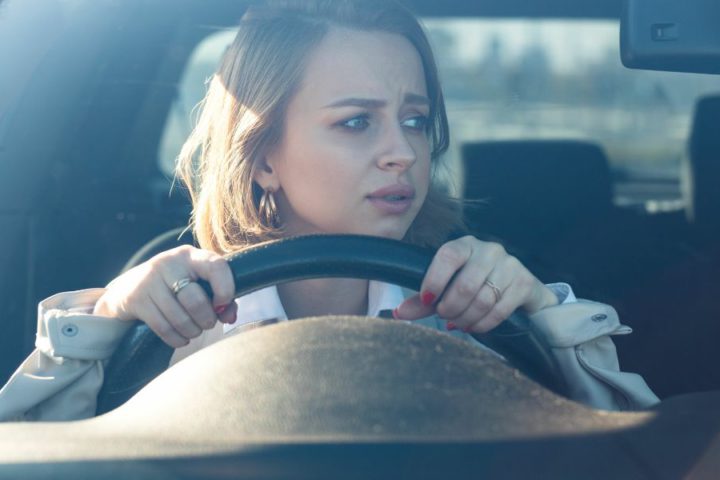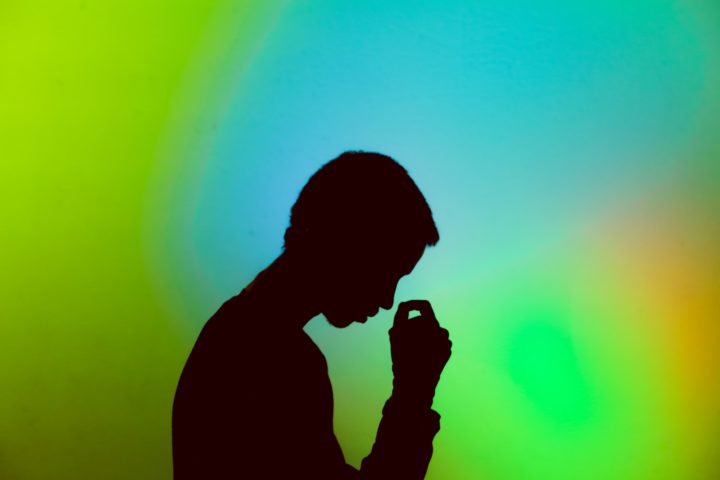Think of a crib as a baby’s own little home. Normally, we wouldn’t want their small home to be riddled with hazardous components.
Here are some ways you can identify cribs made from safe materials.
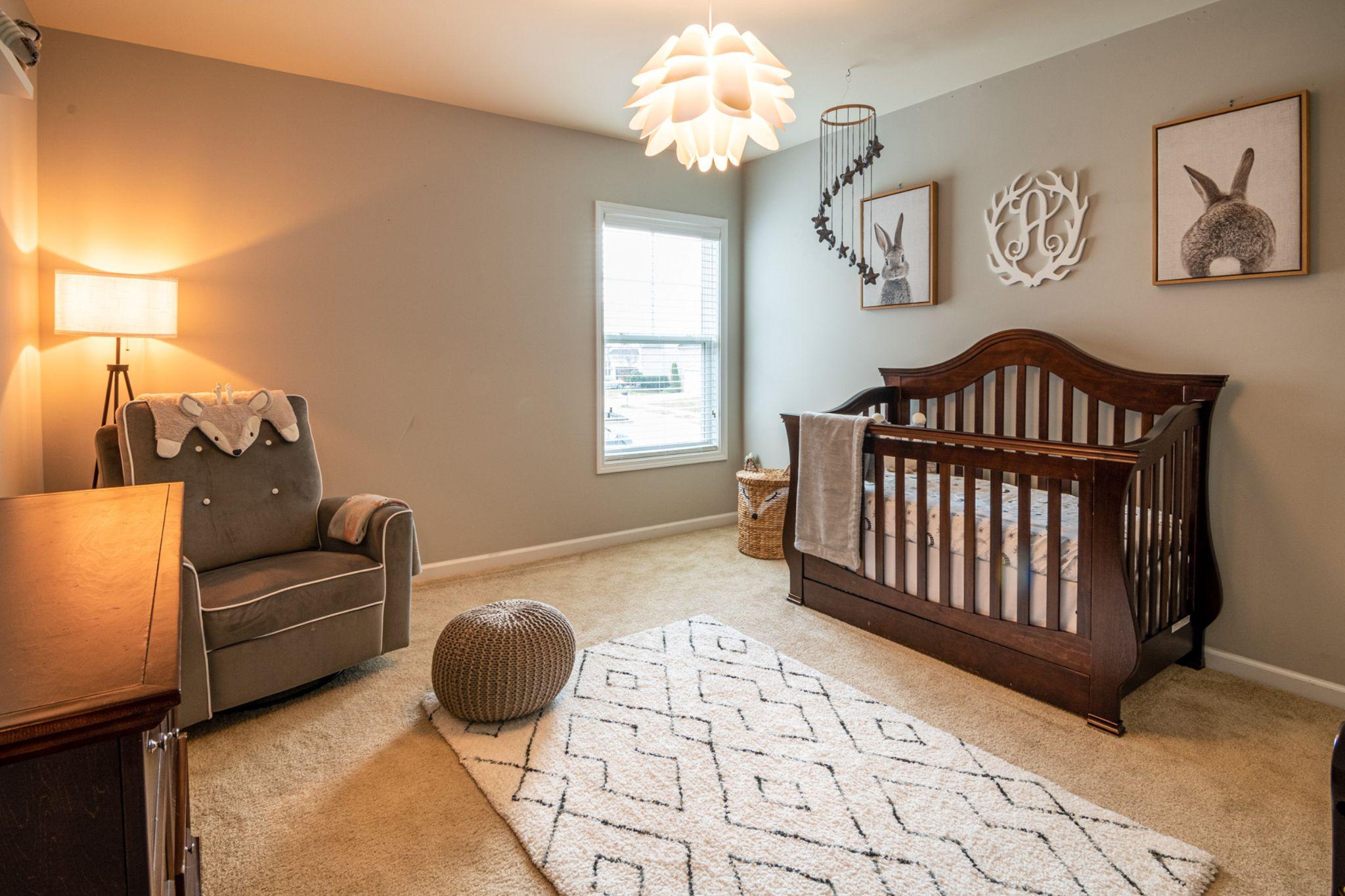
Materials to Avoid
Let’s start with baby crib materials you should avoid.
One thing you have to remember when buying a crib, or any mattress for that matter, is off-gassing.
Off-gassing is what happens when you open a newly bought crib or mattress. The air that gets trapped in the packaging is released into the atmosphere.
The trapped air is a collection of all the materials included in the creation of the mattress. This can be a problem due to the duration. Off-gassing can happen for a few days to sometimes weeks.
Having all the air be a part of the home atmosphere can be hazardous if the crib you buy has toxic and harmful chemicals as a part of the materials.
Getting a crib that doesn’t off-gas is also recommended. But in the event that it does, getting a crib that doesn’t have chemicals in its production will decrease the chances of them being a part of your home’s atmosphere.
Volatile Organic Compounds (VOCs)
So what kinds of chemicals are present in crib manufacturing?
Volatile organic compounds are gasses from products that get emitted into the air. These are the gasses that get mixed into the atmosphere due to off-gassing.
VOCs are common in glue, paint, and finishes, which are used when making a crib. Unfortunately, VOCs have a negative impact on the baby’s health and development.
There are a few types of VOCs normally present in cribs. These are:
- Formaldehyde
- Benzene
- Toluene
- 2-Ethyl Hexanoic
- Phenol
There are types of VOCs, but these are the most common chemicals present in cribs and other baby products (especially formaldehyde).
The other common source of VOCs in cribs (apart from the material itself) is glue. Glues used to put together the parts of the crib can contain formaldehyde. Paints and finishes for the wood also contain VOCs which make these products even more dangerous.
Health risks that may occur due to VOCs include eye, nose, and throat irritation, as well as damage to the nervous system.
The worst part is that it is tricky to identify where it can go since it is a type of gas. It is transparent and dissipates easily, blending in with the air inside the room and house. It will only be noticed once it takes effect on the family through the risks mentioned earlier.
Fragrances
The paint and finishes used to make cribs should also be considered since these usually have strong fragrances.
Strong fragrances are both discomforting and harmful to a child. Spending most of their nights surrounded by strong scents will be a nightmare for them.
Chemically-made paint used in cribs can also do more harm than good to the child. These chemicals can even mix with the other gasses that get released during the off-gassing period.
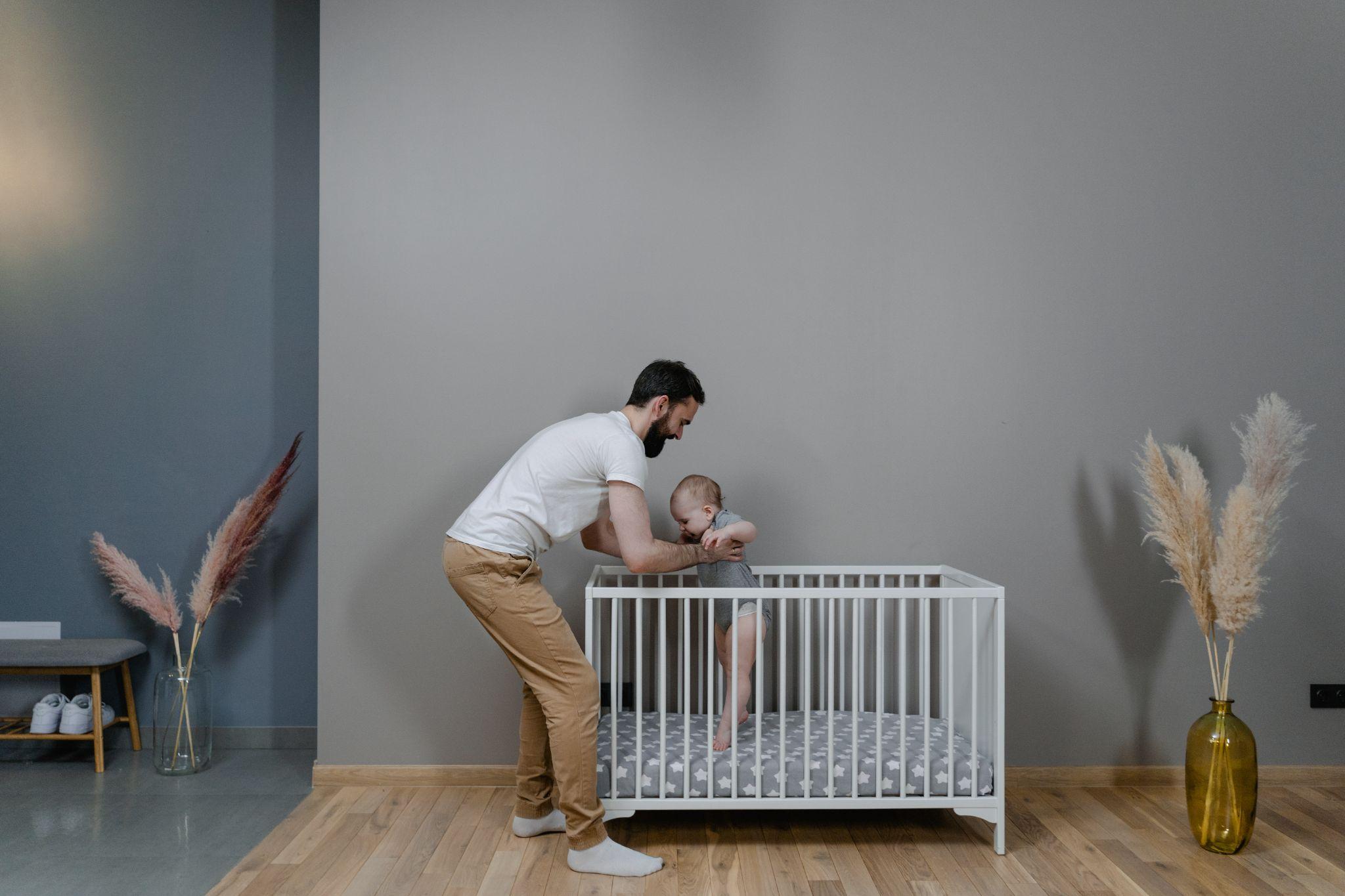
Eco-Friendly Cribs
With every product made with chemicals, there is always an eco-friendly alternative.
Eco-friendly cribs have been making rounds as of late, so they won’t be a rarity for you to look for.
For safe and non-toxic cribs, go for cribs made of solid wood.
The safest types of wood are maple, oak, and cherry. They require less glue, so there are much fewer chances of VOCs in the product. Not only that, but they are also much more durable and sturdy, so there is no need to worry about less glue in the mix.
A downside to solid wood is that it can be expensive at times. You can go for more budget-friendly options such as solid softwood. They are also safe, but they are not as durable as solid wood.
Glue can be difficult to disregard as it is a component of putting a wooden crib together. Should there be glue in the creation of the crib, be sure to check what the glue is made of.
Water or soy-based glues emit much fewer VOCs, so those would be the best options.
What about finishes? They are still used to add some touch ups to the crib. When it comes to that, food-grade oils are great.
Finding cribs with finishes made from natural ingredients will lessen your child’s exposure to VOCs. Additives also contain harmful chemicals so make sure there aren’t any in the mix.
Third-Party Certification
Now that we finally know the types of chemicals and materials to look for and avoid in non-toxic baby cribs, how can we be sure that these product claims are true?
Even if the materials are eco-friendly, how can we be sure that it’s 100% accurate? Or (at the very least) if the natural-to-chemical ratio is much favored towards natural materials, so fewer VOCs pop up during off-gassing?
No need to worry. It’s a normal question for parents to think about. It is easy to say that the materials used are safe and won’t cause repercussions to your baby’s health. You want that level of security when they mean it.
This is why there is a thing called third-party certification.
Certifications can help you identify what cribs are safe and eco-friendly. Think of it as a “stamp of approval” from certain companies that deem that crib as truly safe for babies.
So what kind of certification is out there? And which ones should you pay attention to?
Cribs that are sold in the United States adhere to the requirements of the Consumer Product Safety Commission.
For products specifically aimed at babies and young children, they should carry a Children’s Product Certificate.
On the other hand, Greenguard Gold is used for specific certification regarding toxins and chemicals.
Greenguard Gold deals with product testing to see if there are chemicals present in the product. Their procedures are meticulous.
While not toxin-free, you can rest well knowing that a product with Greenguard Gold certification is a safe from toxins product.
Conclusion
Since your baby is going to spend their nights and afternoon naps inside their cribs, you want to ensure that it is a safe environment for them.
You won’t be able to check them every single night when they sleep, so having a safe and eco-friendly crib takes away most of your worries.
Keep in mind that a good night’s sleep for your baby is a good night’s sleep for the rest of the family.


